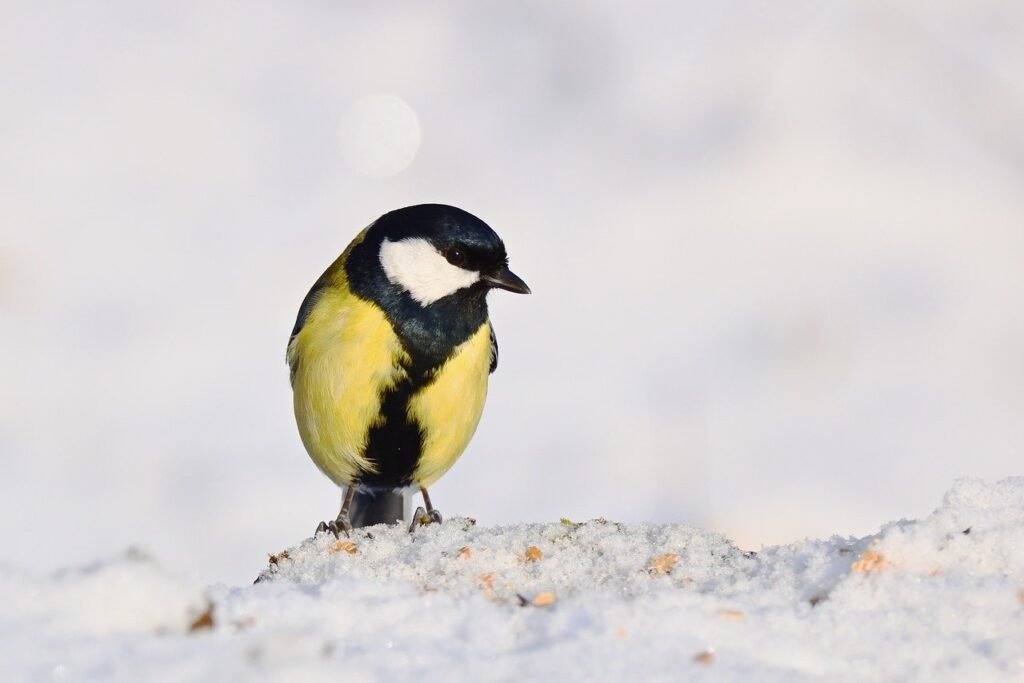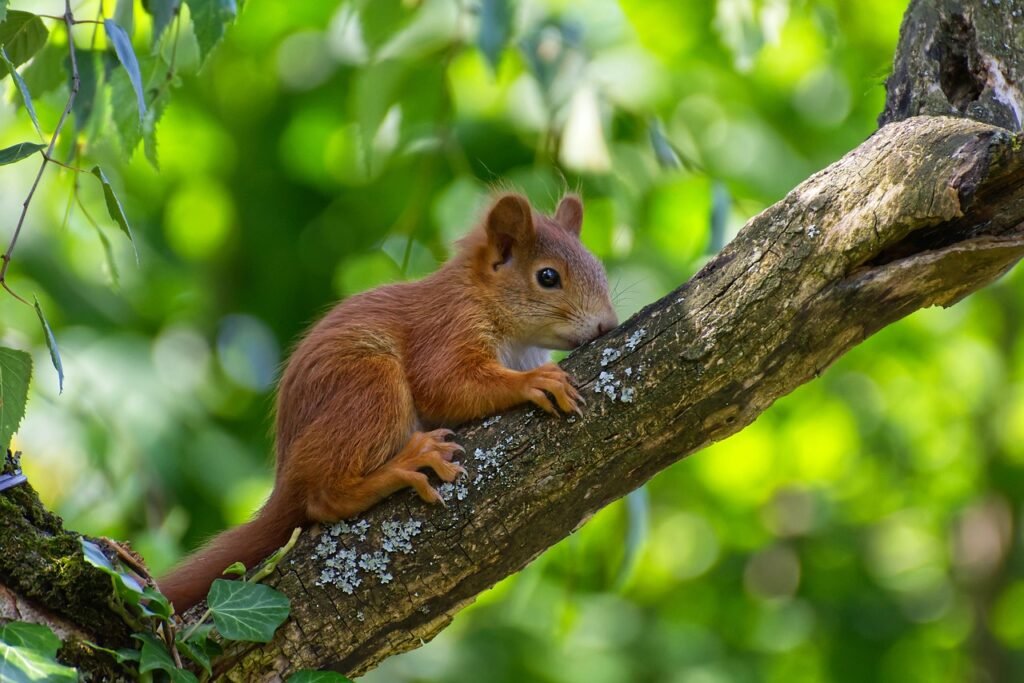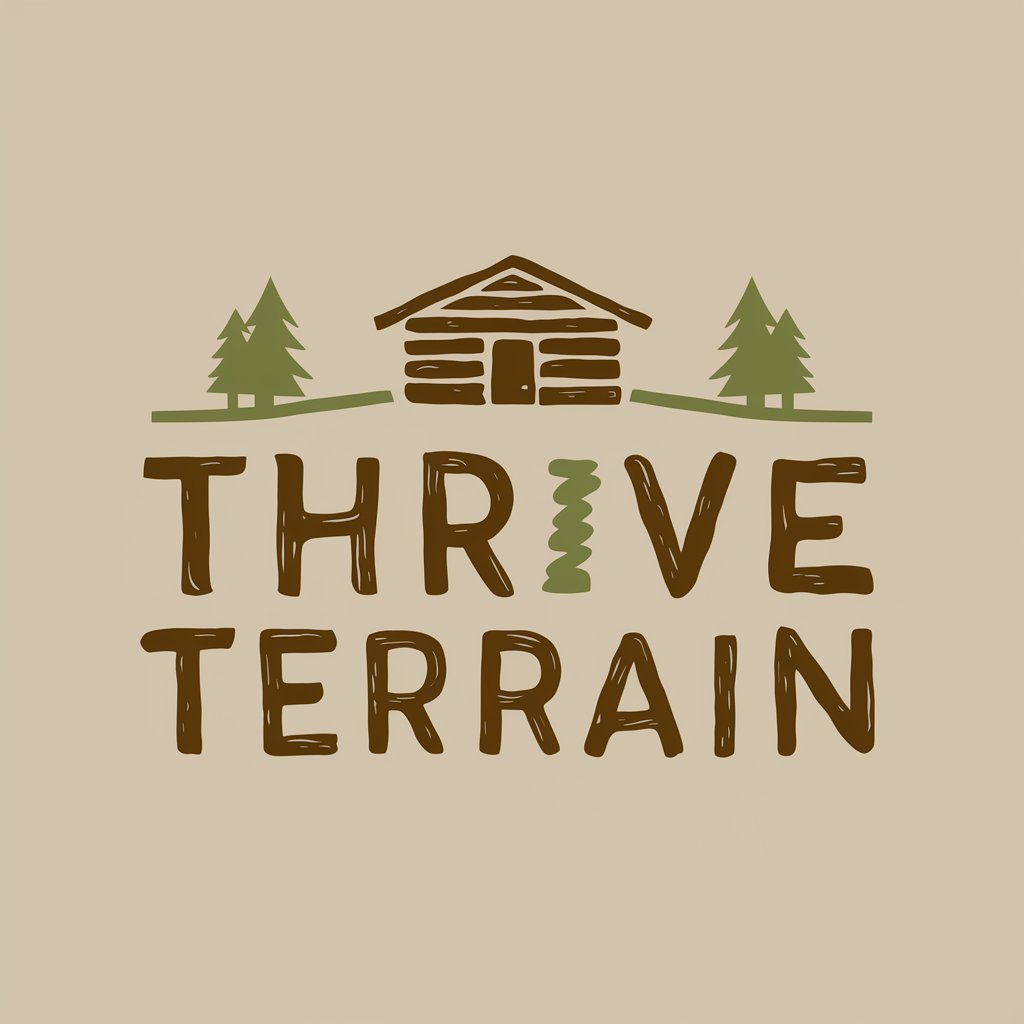Have you ever wanted to gather wild foods but felt uncertain about how to do it safely?

This image is property of pixabay.com.
How Do You Learn To Forage Safely In The Wild?
Foraging can connect you with nature, add fresh flavors to your kitchen, and build practical outdoor skills. You’ll need reliable knowledge, careful habits, and respect for local rules and ecosystems to forage safely and responsibly.
Why Learn to Forage?
You’ll benefit from fresh, seasonal ingredients and a deeper relationship with the landscape when you learn to forage. Learning also gives you practical survival skills and the ability to supplement food supplies in a healthy, sustainable way.
Benefits for your health and kitchen
Wild plants often have higher nutrient density and unique flavors compared with cultivated counterparts, giving your meals new tastes. You’ll also gain physical activity and mental well-being from spending time outdoors and practicing observational skills.
Cultural and ecological value
Foraging connects you to local food traditions and ecological knowledge passed down through generations. You’ll also become more aware of conservation issues and how your actions affect plant populations and habitats.
Legal and ethical considerations
Knowing local laws and land ownership rules is essential before you start foraging. You’ll also need to respect harvest limits and protected species to keep ecosystems healthy.
Where you can and cannot forage
Public lands, private property, and protected areas each have different rules; you must research permissions before collecting any wild food. You should always obtain permission to forage on private land and check with local authorities about harvesting on public lands or in parks.
Practice sustainable harvesting
You’ll protect plant populations by taking only a small percentage of any patch and leaving enough for wildlife and regeneration. You should use low-impact methods—cut rather than uproot where possible, and avoid trampling surrounding vegetation.
Fundamental safety principles
Safety in foraging combines good identification, conservative decision-making, and basic health precautions. You’ll reduce risk by following clear rules and never taking shortcuts with unfamiliar plants or fungi.
Rule of absolute certainty
You should only eat wild foods you can identify with 100% confidence; when in doubt, discard. Using multiple reliable sources and confirming with experts lowers the chance of error.
When to avoid tasting or testing
Never taste a plant you cannot identify, and avoid small “taste tests” for toxic groups like mushrooms or unknown berries. Some poisonous compounds act quickly or build up in small doses, so tasting is a hazardous method.

This image is property of pixabay.com.
Essential gear and clothing
Having the right gear will keep you comfortable, safe, and efficient while you forage. You’ll benefit from tools that help with identification, safe harvesting, and storing finds.
Basic gear list
You should carry a small knife, paper bags or breathable baskets, a field guide, a GPS or map, gloves, and water. These items let you harvest cleanly, preserve specimens for identification, and find your way safely.
Table: Essential Foraging Gear
| Item | Purpose |
|---|---|
| Field guide (regional) | Accurate ID; multiple photos and descriptions |
| Small fixed or folding knife | Clean cuts and safe harvesting |
| Paper bags / wicker basket | Prevents moisture build-up and preserves specimens |
| Gloves | Protection from thorns, irritants, and cold |
| GPS/map & compass | Navigation and safety |
| Water & snacks | Hydration and energy |
| Notebook & pen | Record locations and notes for later reference |
| First aid kit | Treat minor injuries and bites |
Clothing and footwear
You should wear durable layers, long pants, and sturdy footwear to protect against thorns, rough terrain, and weather. Bright or reflective clothing can help you stay visible and reduce the chance of getting lost.
Plant identification fundamentals
Identifying plants accurately requires attention to multiple features: leaves, stems, flowers, fruit, habitat, and season. You’ll need to compare several characteristics rather than relying on one sole trait.
Key ID features to observe
You should note leaf arrangement (opposite, alternate), leaf shape, stem texture, flower color and structure, and fruit form. Observing growth habit—tree, shrub, vine, or herb—and habitat (wetland, dry woods, meadow) gives important context for identification.
Use multiple sources and records
You should cross-check field guides, smartphone apps, herbarium references, and expert opinions when identifying plants. Keep a notebook of your finds with photos and location data so you can verify later and learn patterns over time.

This image is property of pixabay.com.
Mushroom foraging: extra caution required
Mushrooms are rewarding but present higher risk because many edible species have toxic lookalikes. You’ll need formal study, experienced guidance, and conservative habits before you eat any wild fungi.
Why mushrooms are risky
A single misidentification can cause severe illness or fatal poisoning because many toxic species resemble edible ones. You should be aware that toxic mushrooms may mimic color, scent, or shape of safe varieties, especially at different growth stages.
Best practices for mushroom foraging
You should only eat mushrooms after confirming identity with multiple reliable sources and ideally having an experienced forager or mycologist verify them. When you’re starting out, collect only well-known, unmistakable species and avoid any that give ambiguous features.
Common edible wild plants and lookalikes
Learning common edibles and their toxic lookalikes is one of the fastest ways to build safe foraging skills. You’ll want to become familiar with the local species in your region and know which lookalikes to avoid.
Table: Common Wild Edibles and Their Lookalikes
| Edible | Key ID tips | Potential toxic lookalike(s) | Caution |
|---|---|---|---|
| Dandelion (Taraxacum) | Yellow flower, toothed leaves in rosette, hollow milky stem | Some sow-thistles (less common) | Leaves and flowers edible; avoid polluted areas |
| Common chickweed (Stellaria media) | Small white star-like flowers, opposite leaves | Young Geranium seedlings | Taste raw or cooked; confirm petal shape |
| Stinging nettle (Urtica dioica) | Serrated leaves, opposite, hairs cause stinging (destroyed by heat) | Yellow archangel (has similar leaves but differs in flowers) | Wear gloves; cook or dry to remove sting |
| Wild garlic (Allium ursinum) | Broad green leaves, onion/garlic smell, bulb present | Lily-of-the-valley (toxic) | Smell test is crucial; never eat if smell absent |
| Pokeweed shoots (young) | Large succulent shoots in spring, cooked as greens | Several lookalikes; pokeweed has distinctive purple stems | Only eat properly prepared young shoots; many parts toxic if raw |
| Blackberry (Rubus) | Cane with thorns, compound leaves, aggregate fruit | Raspberry similar but edible | Fruit identification generally straightforward |
Tips for avoiding lookalikes
You should not rely on a single trait like smell or color to identify a plant. Cross-check features such as leaf arrangement, stem structure, flower shape, and habitat to avoid dangerous mistakes.

Seasonal foraging and phenology
Knowing when plants and fungi are available across the seasons helps you plan safe foraging trips. You’ll learn to predict where and when to look for particular foods by watching seasonal cues and plant life cycles.
Spring foraging
You should focus on tender shoots, edible flowers, early greens, and morels (where present) in spring. Sensitive species are easier to overharvest in spring, so you’ll practice restraint and selective picking.
Summer and fall harvesting
You’ll find fruits, berries, seeds, nuts, and many mushrooms in the warmer months; fall is particularly good for nuts and late-season mushrooms. You should also be mindful of migrating wildlife that depend on late-season fruits and adjust harvesting accordingly.
Habitat knowledge and microhabitats
Understanding plant communities and microhabitats (edges, wetlands, upland slopes) helps you find safe, abundant foraging spots. You’ll learn that microclimates and soil types strongly influence what grows where.
Reading landscapes
You should observe where plants naturally grow—wetland herbs in marshy ground, sun-loving species on open slopes, shade-tolerant plants under tree canopies. This habitat context helps narrow down ID possibilities and reduces risky guesses.
Microhabitat examples
You’ll look for ramps and wild leek in moist, shaded slopes with leaf litter; berries on south-facing slopes or forest edges; mushrooms in mossy humus or decaying logs. Each microhabitat supports predictable species assemblages that aid identification.

Harvesting techniques and etiquette
You should harvest in ways that minimize harm to the plant and the ecosystem. Proper techniques help ensure the plant population will continue to produce for you and wildlife.
How to harvest responsibly
You should cut instead of uprooting when possible, take only a small percentage of the patch (commonly recommended 10–30%), and rotate harvest sites. Avoid taking entire plants or immature specimens that haven’t set seed.
Handling and transportation
You should use breathable containers like baskets or paper bags to prevent mold and crush damage to your harvest. Keep delicate items separate and avoid mixing toxic species with edible ones while transporting.
Preservation, processing, and storage
Preserving wild foods extends their usefulness and helps you get the most nutrition and flavor from your harvest. You’ll learn basic methods: drying, freezing, pickling, fermenting, and storing.
Simple preservation methods
You should dry herbs and mushrooms for long-term storage, freeze berries and chopped greens, and pickle or ferment vegetables for flavor and longevity. Proper drying temperature and clean storage containers are essential to prevent spoilage.
Cleaning and prepping wild foods
You should clean foraged items thoroughly—rinsing berries, removing grit from roots, and removing any signs of insect damage. Some plants require cooking to neutralize mild toxins or remove stinging hairs, so follow preparation guidance carefully.
Cooking with wild foods
Wild ingredients can enhance familiar recipes or inspire entirely new dishes in your kitchen. You’ll find that subtle flavors like nutty greens, citrusy blossoms, or mushroom umami can transform meals.
Simple cooking ideas
You should use wild greens in salads or lightly sauté them with garlic and oil, add berries to jams and desserts, and use herbs to flavor soups and sauces. Mushrooms are excellent sautéed with butter or used in broths but must be cooked thoroughly.
Nutrition and food safety
You’ll gain nutrients like vitamins, minerals, and phytochemicals from wild plants, but be aware of contaminants like heavy metals or pollutants from foraging near roads or industrial sites. Choose clean sites and consider local advisories about consumption of certain species.
Learning from experts and community resources
Structured learning dramatically reduces risk, so you should seek qualified instruction and community resources. Field classes, guided walks, and local clubs give hands-on experience and safe mentorship.
Where to find reliable instruction
You should look for courses taught by experienced botanists, ethnobotanists, or certified mycologists through universities, botanical gardens, or reputable foraging schools. Local naturalist clubs, cooperative extension services, and indigenous knowledge-holders are also invaluable.
Using guides, apps, and online resources cautiously
Field guides and apps are useful but can’t replace direct experience and expert verification; you should use them as supplements. Online forums may have helpful photos but also conflicting or incorrect identifications—verify with trusted sources.
Foraging with children and groups
You can make foraging a safe, educational activity for families and small groups with careful planning and rules. You’ll encourage curiosity while emphasizing safety and respect for nature.
Safety rules for group foraging
You should establish clear boundaries, require adult supervision for children, forbid tasting without adult approval, and teach identification basics before collecting. Keep group sizes small to minimize impact and maintain control.
Educational activities
You’ll use simple tasks like leaf rubbings, taste-safe sampling of obvious edibles, and mapping plant locations to teach observation and record-keeping. These activities build long-term skills and foster respect for the natural world.
Common poisonous plants and lookalikes to avoid
Familiarity with hazardous species prevents accidental poisoning and helps you recognize warning signs in the field. You’ll need to memorize a shortlist of dangerous plants and their distinguishing features.
Notable poisonous plants
You should be able to identify poison hemlock, water hemlock, deadly nightshade, oleander, and certain lupines—each can cause severe outcomes if ingested. Learn their leaf shapes, flower structures, and preferred habitats to avoid confusion.
How to react if exposure occurs
If you suspect poisoning from eating a wild plant or mushroom, you should seek emergency medical help immediately and, if safe, bring a photo or sample for identification. Prompt professional care and accurate identification can be lifesaving.
First aid and emergency preparedness
Before you forage, prepare for minor injuries and emergencies by packing a small first aid kit and letting someone know your route. You’ll also plan for worst-case scenarios like allergic reactions or lost-person situations.
First aid essentials
You should include supplies for cuts, stings, allergic reactions (antihistamines, epinephrine if prescribed), and blister care in your kit. Basic wilderness first aid knowledge helps you handle common issues until you can get professional medical care.
Emergency communication
You should carry a charged phone and a backup power source, and consider a personal locator beacon or satellite communicator if you’ll be far from cell coverage. Tell someone your planned route and expected return time before heading out.
Building your skills over time
Foraging proficiency grows with repeated observation, study, and safe practice. You’ll build confidence by focusing on a few species each season and expanding your knowledge gradually.
Practice routines
You should keep a field journal with photos, locations, and notes on habitat and seasonality to reinforce learning. Revisit the same sites across seasons to see plants at different stages and deepen your understanding.
Joining a community of learners
You’ll accelerate your learning by joining local foraging groups, taking field courses, and volunteering with naturalist organizations. Peer feedback and mentorship shorten the learning curve and improve safety.
Sample foraging checklist before heading out
A pre-trip checklist ensures you don’t forget essential items and that you’re prepared for safe gathering. You’ll use this list to streamline your preparations and reduce on-site decision stress.
Table: Pre-Foraging Checklist
| Category | Items to bring | Notes |
|---|---|---|
| Identification | Regional field guide, notebook, smartphone camera | Cross-check identifications; photograph specimens |
| Harvest tools | Knife, scissors, gloves, basket/paper bags | Keep edible and non-edible separate |
| Navigation | Map, compass, GPS, route plan | Share route with someone not going with you |
| Safety | First aid kit, water, snacks, whistle, headlamp | Include any personal medications |
| Communication | Phone, charger, emergency beacon (optional) | Check battery and signal before leaving |
| Clothing | Sturdy boots, long pants, hat, rain jacket | Dress for weather and terrain |
| Legal | Permits or landowner permission | Verify rules and harvest limits |
Resources to continue learning
You’ll benefit from a mix of books, field courses, local experts, and cautious online resources as you develop skills. A planned educational path helps you progress without taking unnecessary risks.
Recommended learning steps
You should start with regional field guides and a few species, attend guided walks, and then enroll in more advanced workshops or certification courses. Reach out to local extension services, botanical gardens, and mycological societies for schedules and recommendations.
Suggested reading and institutions
You’ll find reputable books on wild edible plants, foraging ethics, and mushroom identification from authors with strong field experience. Universities, botanical gardens, and conservation groups often publish region-specific materials that are reliable and practical.
Final safety reminders and next steps
Foraging is rewarding but requires discipline: only eat what you can identify fully, respect land regulations, and harvest sustainably. You’ll become a safer forager by learning from experts, practicing conservatively, and recording your experiences for ongoing improvement.
Immediate actions to take
You should plan to attend at least one guided field trip, acquire a regional field guide, and compile a short checklist of 5–10 safe, easy-to-identify species to focus on first. Keep meticulous records and don’t rush into sampling wild foods without confirmation.
Long-term approach
Over months and seasons, you’ll expand your knowledge, refine identification skills, and learn local patterns that make foraging safer and more productive. As your confidence grows, you’ll also develop a deeper appreciation for protecting habitats and contributing to local conservation.
If you follow these steps—prioritizing identification, legal and ethical practice, conservative decision-making, and ongoing learning—you’ll significantly reduce risk and make foraging a safe, sustainable part of your relationship with the outdoors.

